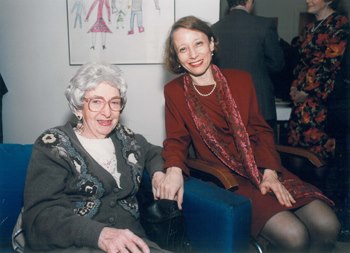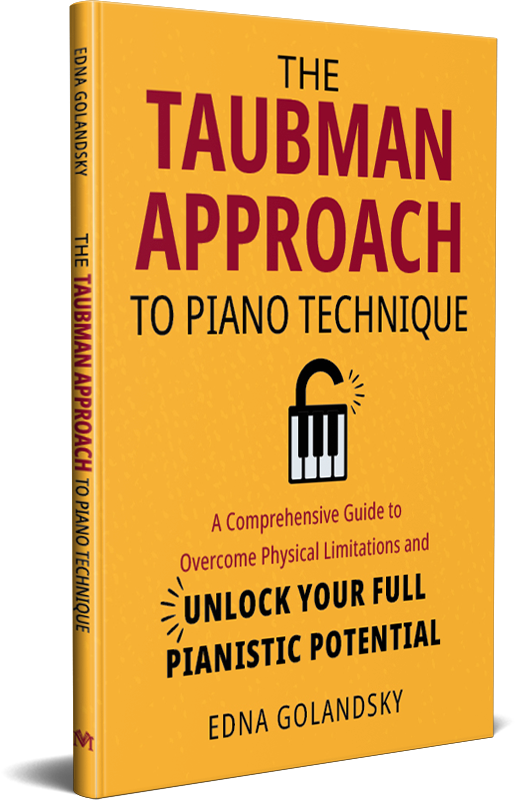Edna Golandsky: Mastering the Art of Piano Technique with the Taubman Approach

Edna Golandsky stands as a towering figure in the world of piano pedagogy, renowned for her profound expertise in the Taubman Approach. With degrees in music from the prestigious Juilliard School and extensive training under Dorothy Taubman, Edna has dedicated her career to revolutionizing piano technique and alleviating the physical ailments that plague many pianists. Her work has garnered international acclaim, drawing performers and students from around the globe to seek her guidance.

In this interview, Edna Golandsky shares insights from her journey, co-founding the Taubman Institute and the Golandsky Institute, and the core principles that set the Taubman Approach apart from traditional methods. We delve into her global teaching experiences, the intersection of music and medical science, and her latest projects aimed at furthering the reach and impact of this transformative technique.
Serenade Team: How did your education at the Juilliard School and your studies with Dorothy Taubman influence your development as a piano pedagogue?

Edna Golandsky: Although my eight years at Juilliard gave me a broad education in the world of music, my real development as a piano pedagogue came from my studies with Dorothy Taubman. I first learned the principles of correct piano technique from her. Then, after a year of studying with her, I began to teach others. As I continued my studies with her and deepened my knowledge, I became better able to diagnose the root causes of problems and communicate solutions, resulting in my ability to help a wider population of pianists resolve their problems and advance their technique both technically and musically. It is a process that continues to this day.
ST: Can you describe the process and challenges of co-founding the Taubman Institute with Dorothy Taubman in 1976? What motivated you to expand the Taubman Approach beyond piano to other instruments like the violin?
EG: From early on in my work with Dorothy Taubman, I understood the potency of her information and wanted to share it with others. It occurred to me that if we gave a summer seminar, other people who were interested but unfamiliar with this body of knowledge could be introduced to the work, while people who were already involved could deepen their understanding. Although I am not a businessperson, I was lucky enough to find a good administrator who, along with Dorothy and myself, was able to make this a reality in 1976.
Along the way, other instrumentalists who had heard about the work and were suffering from various physical problems contacted me looking for solutions. In general, a few lessons would suffice to help people relieve their symptoms. However, the violinist Sophie Till saw the potential of this approach when I was able to answer questions that proved impossible for her other teachers to answer. Sophie worked with me for twelve years to fully develop the application of the approach to string playing.

ST: How has your international experience, including seminars and master classes in various countries, shaped your teaching methods and approach?
EG: The seminars and master classes I’ve given internationally have confirmed that pianists confront the same problems regardless of where they live because the training they receive is similar. Due to this similarity of problems, my teaching methods and approach remain the same, no matter where I teach.

ST: You have been involved in music medicine conferences. How important is the intersection of music and medical science in your work?
EG: Medical science deals with symptoms, whereas the Taubman Approach deals with root causes that provoke the symptoms. When taught by a well-trained Taubman teacher, the Taubman principles of correct positions and movements both resolve physiological problems and also enable the pianist to play with speed, ease, and freedom.
It would be helpful to use scientific methods to measure and validate the Taubman Approach principles. For example, a scientist could test the brain of an injured pianist and see the changes that occur before, during, and after the pianist uses the Approach. I have been looking for a long time for a professional to partner with me in this initiative.

ST: What inspired you to write ‘The Taubman Approach to Piano Technique’ at this point in your career?
EG: After working with Dorothy Taubman for many years and continuing to refine and deepen the Approach, I wanted the work to be represented in its most authentic way. I saw that others were presenting pieces of the work and combining it with other methods, which diluted or even negated its benefits. I realized that a book giving a complete in-depth representation of the work was necessary.

ST: Can you explain the core principles of the Taubman Approach and how they differ from traditional piano techniques?
EG: Taubman’s core principles, summarized below, are the basis for a healthy and natural technique. Correct alignment is fundamental to a well-coordinated and high-functioning technique. The principle of coordinate motion is the cornerstone of the Taubman Approach. The fingers, hand, and forearm must always be properly connected and move together at all times for the pianist to play with efficiency and ease. Rotational and lateral forearm motions allow the fingers, hand, and forearm to move as a unit and prevent fingers from isolating, curling, and stretching. Fatigue, tension, and pain are avoided, and a technique emerges that is symptom-free, fast, and reliable.
In and out motions refer to movements into the black key area and out to the white key area. These movements prevent the curling and twisting that are the root cause of tension and pain. Shaping motions are curvilinear motions by the hand and forearm over groups of notes, due to the different lengths of the fingers, changes in direction, fingering, and more, that add to the feeling of naturalness, speed, and ease. Shaping allows a person to sound musical without effort; without it, passages tend to sound note-y and static. Traditional piano technique is based on isolated and curled fingers, stretching and twisting motions, and relaxed fulcrums, such as a dropped wrist. All of these positions and movements can result in pain, tension, and injury.

ST: Your book includes an accompanying video library. How do these videos enhance the learning experience for readers?
EG: Because piano technique deals with physical motions, words are typically not adequate to give the pianist a full understanding of the concepts presented in the book. The video library fills this gap by demonstrating and clarifying the material in the book.

ST: How does ‘The Taubman Approach to Piano Technique’ cater to pianists of different skill levels, from beginners to advanced players?
EG: Beginning students will have the opportunity to learn correct technique from the start. This will not only give them security, speed, ease, and freedom but also enable them to enjoy a pain- and injury-free experience. Intermediate, advanced, and professional pianists will also benefit. The information in my book can correct their problems and teach them the additional skills necessary to learn more difficult pieces.

ST: In your opinion, why is it crucial to move away from the ‘no pain, no gain’ mentality in piano practice?
EG: Pain is always an indicator that something is wrong, and practicing with pain ignores this reality and often leads to serious injury. My saying is, “No pain is your gain.”

ST: What future projects or initiatives do you have planned to further promote and develop the Taubman Approach?
EG: We have a variety of workshops every year. Every summer, the Golandsky Institute presents its yearly virtual symposium. I’ll be in Vienna, Austria, for a piano workshop hosted by the Deren Piano Academy on October 19 and 20, and I’ll be teaching in Madrid, Spain, between October 29 and November 1. You can find the details to attend on my website www.ednagolandsky.com.

‘The Taubman Approach to Piano Technique: A Comprehensive Guide to Overcome Physical Limitations and Unlock Your Full Pianistic Potential’ is available for pre-order via Amazon and Barnes & Noble, with a release date of September 10, 2024.





